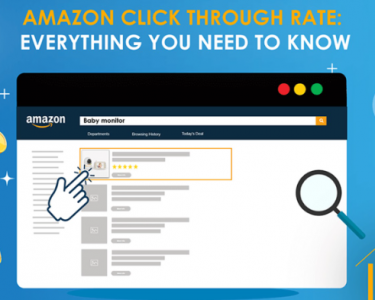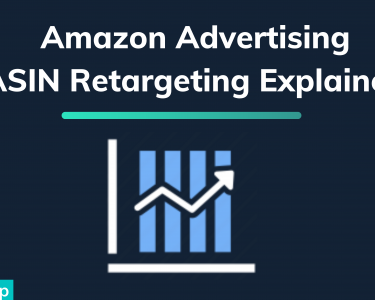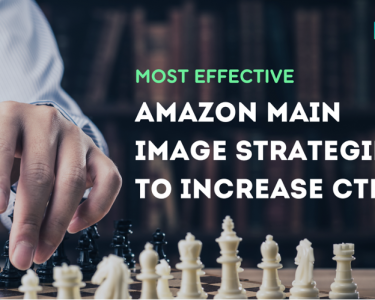
Selling on Amazon isn’t always about offering the best product at the best price — over two-thirds of shoppers “trust their gut” over rationale when making purchasing decisions, so sellers are better off appealing to their emotional side. But how can you guess what your customers really want? With Amazon split testing, you don’t have to guess at all.
Amazon split testing, or “A/B testing,” effectively takes the guesswork out of choosing the best product photos, text copy, and even pricing. Amazon’s native Manage Your Experiments (MYE) tool even lets you test different images and other variables live on Amazon to see which perform best so you can make informed decisions without a shadow of a doubt.
But how does Amazon split-testing work? What can you test? Are you even eligible? Below, we explain everything you need to know about A/B testing on Amazon so you can get started right away.
How Amazon Split-testing Increases Sales
Split-testing in general is a great aid for eCommerce, whether you use Amazon’s MYE tool or an independent service. As mentioned above, you no longer have to guess what your customers want; they tell you directly through minimal trial and error.
But how specifically does Amazon split-testing help? The minutiae and tiny details of your listing, such as price, images, and product page text, all have an enormous impact on customer opinion and conversion rates, but the effects may not always be evident at first glance. That’s where A/B testing comes in.
In split testing, two different versions of the same image or page are shown to different users, and the results are recorded. Typically, the versions are similar except for one key variable — the same image in different colors, or the same product page with different product titles — but you can also test drastically different versions if you prefer.
Split testing works best when the test-takers are your target audience. With Amazon MYE, your experiments appear directly in the Amazon marketplace just like regular products. That means they’ll show up normally when customers hit your target keywords or click your ads, appearing in front of the people they’re supposed to.
From there, you check to see which version performs better. Do your shoppers prefer a close-up product photo, or maybe one that shows everything included in the package? Is your ideal price just as ideal for shoppers? You don’t need to guess anymore, you can find out for sure.
Amazon split-testing is one of the most effective and data-driven methods of optimizing your product pages. Tailoring your pages to your specific customers’ wants not only increases conversions but also creates more satisfied customers — and satisfied customers usually come back.
Ecommerce success has a snowball effect, so the more sales you make, the easier it is to rank on page 1 of Amazon. In this way, those tiny details in your pages and pictures add up to make a big difference.
Who is Eligible for Amazon Split-testing?
Amazon’s own split-testing tool, Manage Your Experiments, still have limited access. The good news is that any Amazon seller can still use A/B testing from an outside source to improve their Amazon sales.
For starters, MYE is only allowed for sellers who:
- sell in the U.S.
- are enrolled in Amazon Brand Registry
- have a product with high enough traffic
Moreover, the variables you can test through MYE have limited as well: essentially just product images and titles, along with A+ Content for those who use it.
If you don’t meet these criteria, don’t sweat it — you can always work with an independent split-testing service like PickFu. These can sometimes be more useful than MYE; for example, they allow you to test more variables like pricing and experimental products.
Even more alluring is the safety of testing outside of Amazon. MYE uses actual Amazon users, so if one of your samples performs poorly, those real shoppers won’t know it’s just an experiment. In other words, if you’re testing something that’s truly a risk, you might make a bad impression on potential customers.
How to Use Amazon Split-testing with MYE
What can you test on Amazon MYE? Here are some of the best ways to use Amazon split testing to improve your sales strategies.
Optimize Product Photography
Split-testing has deep roots in image optimization, making it ideal for finding the perfect product photography. At its core, A/B testing is just a poll to see which picture people like better.
Because product photography is so vital to eCommerce, it requires more than just staying up-to-date with the current eCommerce photography tips. Different customers have different tastes — some prefer pictures that demonstrate how the product works, others prefer more aesthetic or “prettier” pictures. The perfect product photograph is different depending on what you’re selling and whom you’re selling it to.
Amazon split-testing answers unequivocally which product photos will work best for your brand. You can test on either a large and small scale: for example, you can test two completely different images or similar images distinguished with a single variable (like including your logo in the corner).
Maybe your product photo would benefit from an insert of someone actually using the product? Demonstration photos can show shoppers how to use a product, increasing sales by clearing up some confusion. Of course, maybe that insert would make your product photo too crowded. The only way to know for sure is through testing on your actual customers.
Better SEO Keywords and Product Titles
On Amazon, product titles work two jobs: describing the product to shoppers and hitting the right SEO keywords to show up in the right feeds. Both of these can be perfected by split-testing your product titles through Amazon MYE.
By experimenting with different titles, you can explore how well your product fits with different keywords. Want to try a risky long-tail keyword as part of your Amazon keyword research? A split-test lets you test any number of keywords and keyword phrases to see which ones your target customers actually use.
You might be surprised by what shoppers type in when searching. If you feel that your current keywords are underperforming, A/B testing your product titles lets you try new things with minimal risk.
Amazon Split-testing without MYE
Amazon MYE has its limits, but luckily you can find A/B testing independently. Outsider services allow you to test more parameters — including pricing and experimental listings — and without the risk of scaring off actual customers by testing live on Amazon. That’s worth remembering if you don’t meet the eligibility requirements for MYE in the first place.
Perfect Price Points
How much is too much? Use split-testing to try out different price points, so you know precisely how much customers are willing to pay, right down to the exact cent. Undercutting rivals is a practical necessity for a competitive market like Amazon, but you don’t want to go too low that it cuts into your profits. A/B testing reveals the perfect price points to keep both you and your customers happy (but not your competitors).
Engaging Sales Copy
Every salesperson knows the importance of persuasive phrasing, but just like product photography, different words work best on different audiences. To see which text copy best resonates with your target audience, you might try out a few different versions to see what works.
Amazon split-testing lets you optimize both word choice and text length, not to mention sampling different slogans or calls-to-action to see which work best. This can be particularly useful if you’re still trying to find your brand voice — do your shoppers want to hear a friendly casual voice or perhaps something more trustworthy and formal?
Experimental Product Listings
Amazon split-testing does more than just optimize your product listings — it can optimize your entire catalog. If you’re ever unsure whether to add a new product to your line, just conduct an A/B test.
Let’s say you’re a T-shirt seller and you want to add more clothing to your range. You could split-test different brands of hats, shoes, accessories, etc. to see which (if any) your target customers would buy. This reveals not just what types of products your shoppers want, but also which brands and styles of those products suit your existing customer base.
Every merchant wants to grow their Amazon business, but offering a product your customers don’t want will only set you back. Use Amazon split-testing to decipher what your shoppers specifically would and wouldn’t buy.
At AMZ One Step, We came up with a cool concept of split test the image and friendly competition between our design teams. Check this video out and I am sure you will enjoy it.
Prepare Your Amazon Account for Success
As effective as Amazon split-testing is, it can be challenging to conduct your own, especially for new sellers. You may not yet have found your ideal niches, keywords, or price points. You might not even know who your best customers are yet.
If you feel like you haven’t quite mastered the basics yet, something advanced like split-testing might put you off — but that’s when you most need those discoveries.
That’s where AMZ One Step can help. We offer services across the board for Amazon sellers new and old: PPC management, content creation, account overseeing, product packaging, keyword ranking — you name it. If you’re having trouble getting the sales data you need, we can help you find it.
That goes for Amazon product photography as well. Your image split tests are only as good as the images you’re testing; using our photography services ensures that your test images are already as good as can be before the finishing touches.
If you want to know how we can help, schedule a free consultation. Our customer success manager Curtis Schick will answer any questions you have from between 15 to 60 minutes, so book your free call now.

Kamaljit Singh is the Founder and CEO of AMZ One Step and a former Amazon seller. Kamaljit has been featured in multiple Amazon podcasts, YouTube channels. He has been organizing meetups all around Canada and the US. Kamaljit has over 350,000 views on his Quora answers regarding FBA. Kamaljit also founded AMZ Meetup where he organizes conferences for Amazon sellers.



